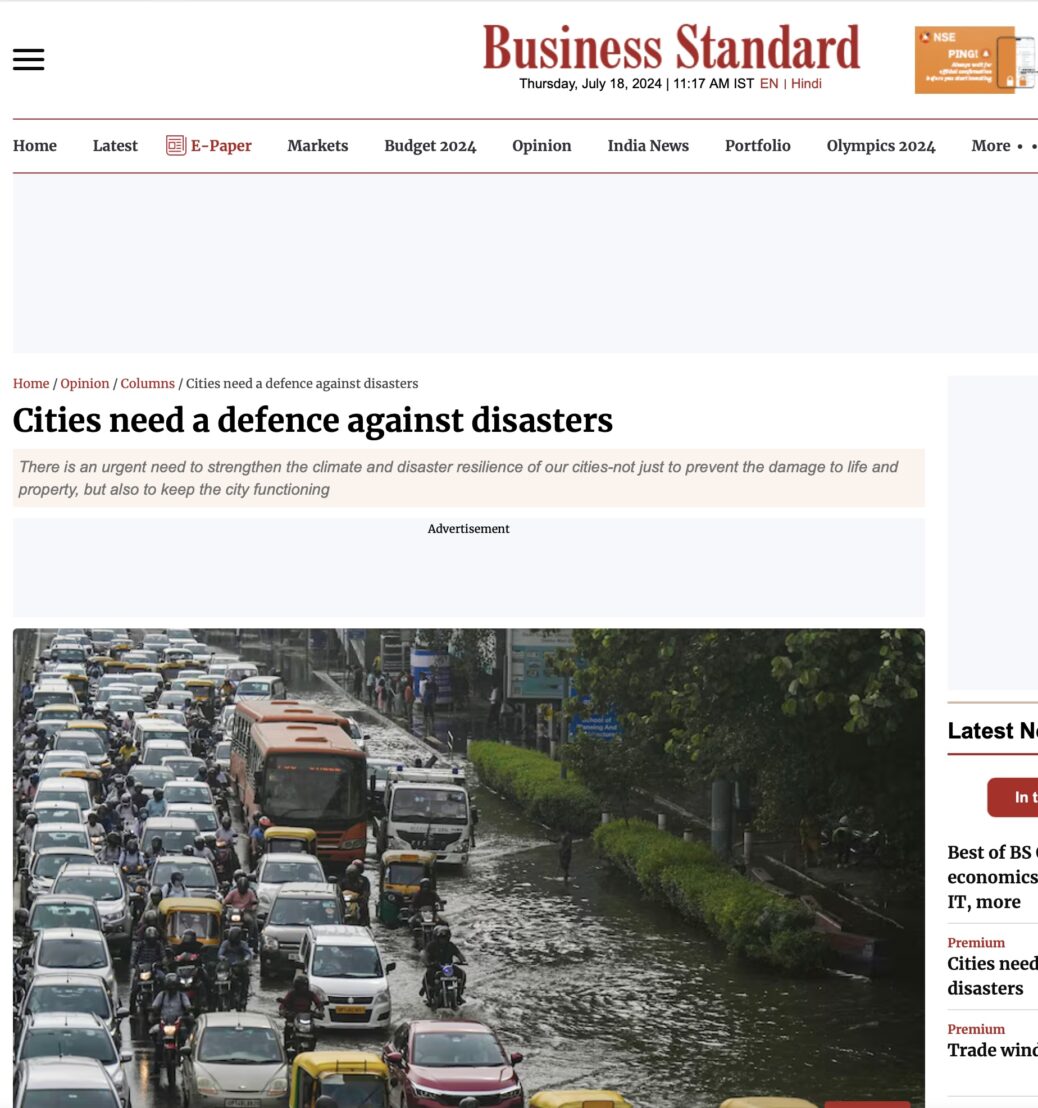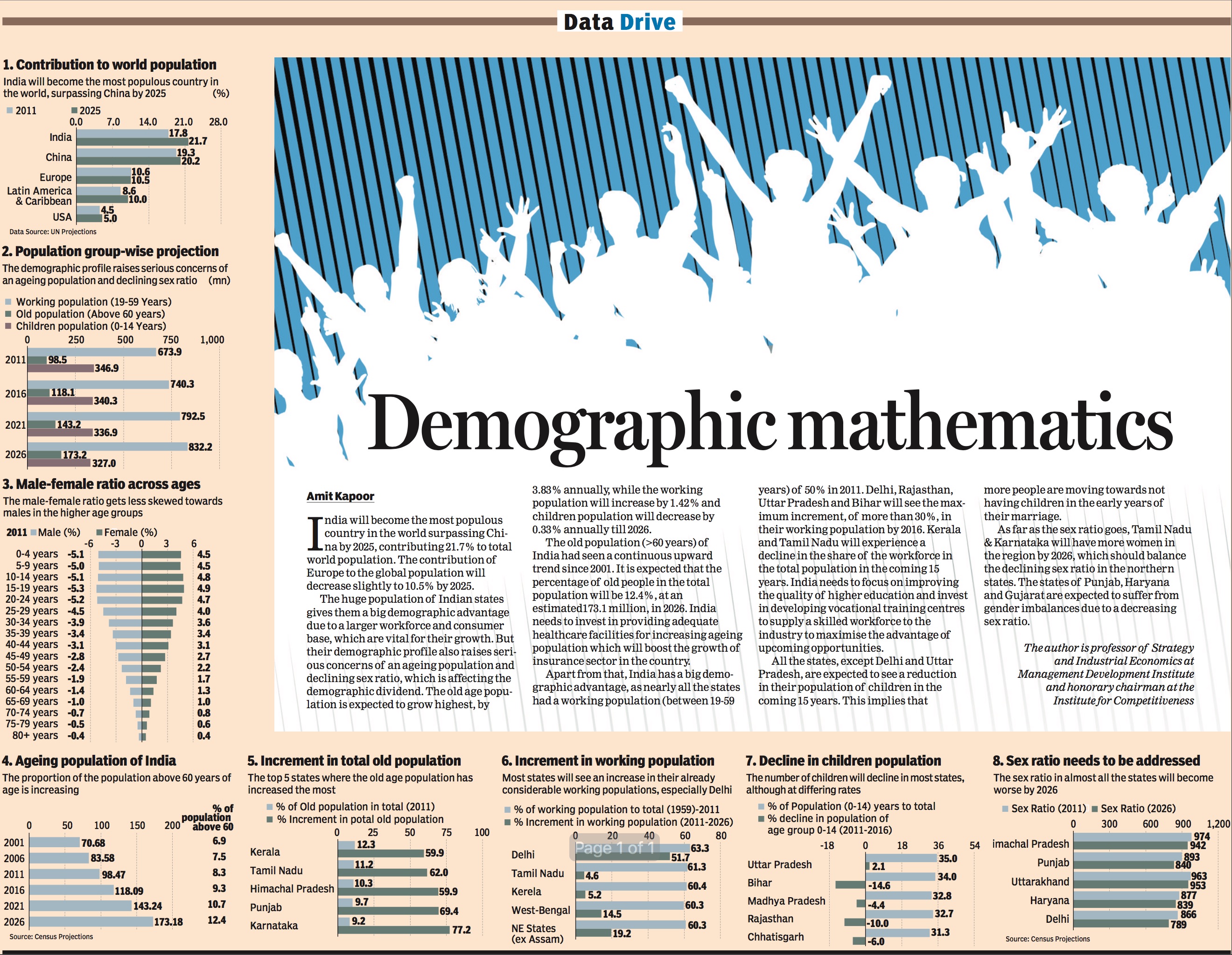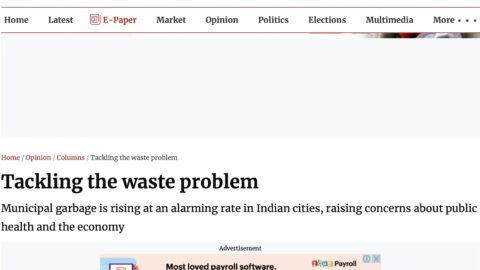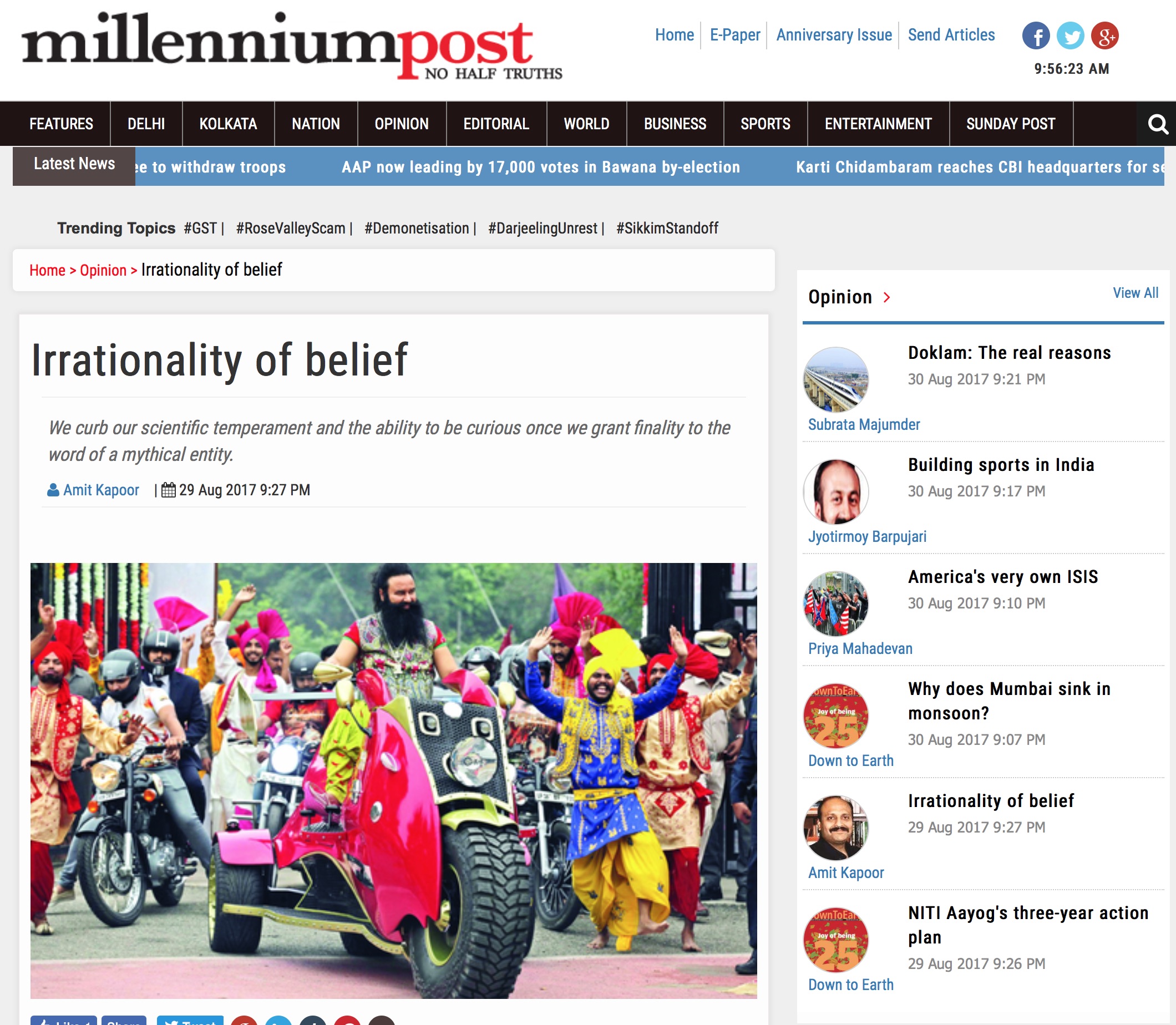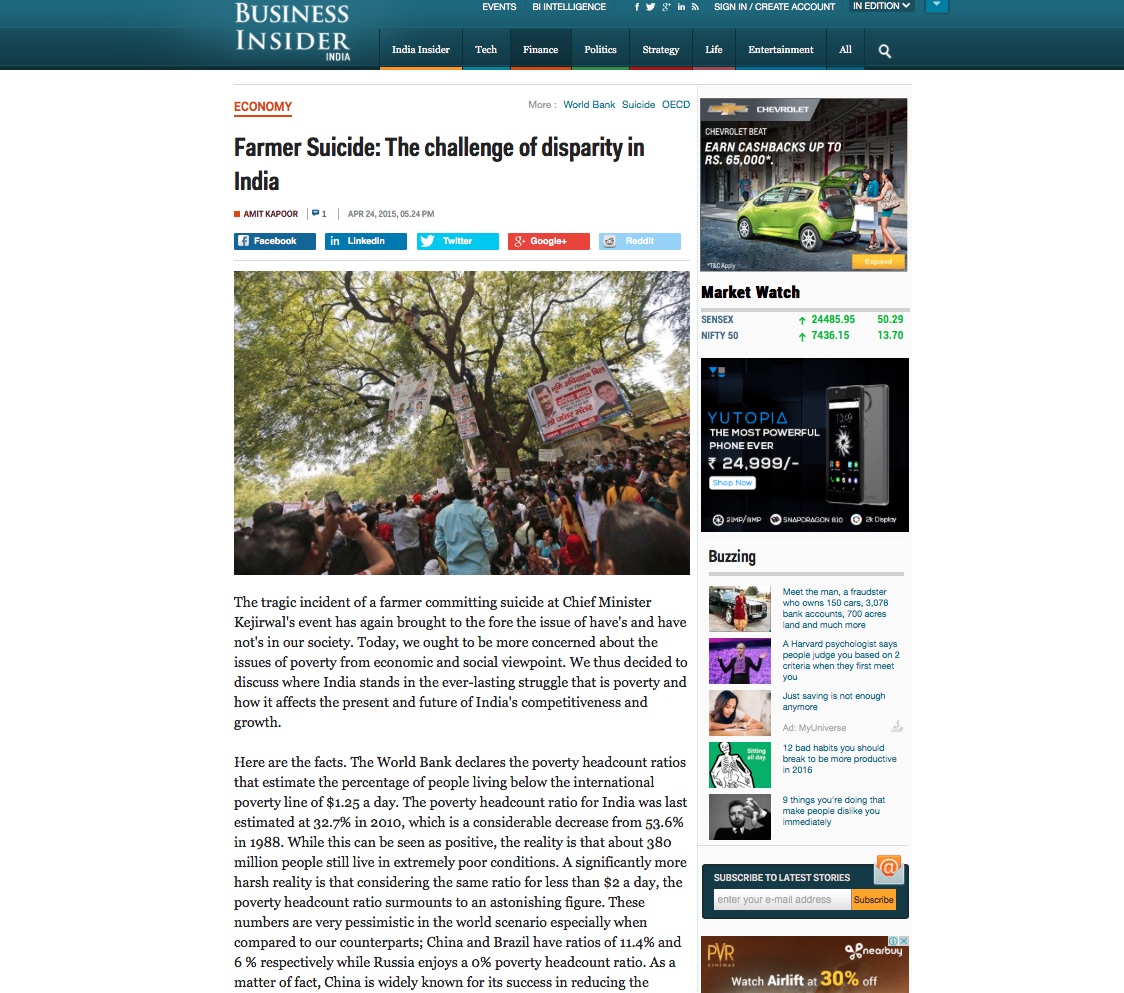Smart Infrastructure: Tackling Climate and Disaster Risks in Cities
By Amit Kapoor and Bibek Debroy
A sombre reminder of the transience of life appears when one looks at the picture of a lifeless man crushed under the fallen pillar of an airport as the city floods due to heavy rainfall. Of late, India has borne witness to multiple incidents of loss of life and damage to critical infrastructure due to extreme weather conditions. In the last few months alone, the walls and pillars of several airports (including in the National Capital) have collapsed due to heavy rainfall. Such instances beg the question of whether our smart cities have climate-smart and disaster-resilient infrastructure to ensure the safety of the general public. Extreme climate events increase disaster risk, asset loss, and service disruptions, potentially compromising existing infrastructure. Further, damage or disruption to infrastructure within urban systems can lead to cascading risks and widespread service interruptions across regions. Undoubtedly, our cities must enhance their essential municipal functions to address the crises that disrupt mobility during heat waves and heavy rainfall. However, as buildings start to crumble under the weight of climactic conditions, one begins to realise the urgency of having climate and disaster resilient infrastructure. It becomes all the more imperative as India is a founding member of the Coalition for Disaster Resilient Infrastructure (CDRI), which aims to strengthen the climate and disaster resilience of critical infrastructure.
Investing in resilient infrastructure is not just about preventing damage and loss of life; it is about ensuring the continuity of services that keep our cities functioning. When roads are impassable, public transportation grinds to a halt, and power outages become frequent, the very fabric of urban life is threatened. These disruptions have far-reaching impacts on the economy, health, and well-being of city dwellers. Incorporating disaster and climate risk assessments into urban planning is a proactive approach that enables cities to prepare and mitigate natural hazards. This integration ensures that infrastructure is designed and built to withstand extreme weather conditions, reducing the likelihood of catastrophic failures. It also means creating urban spaces that can absorb and manage environmental stresses, such as more green spaces to mitigate the urban heat island effect and water management systems that prevent flooding. The Sendai Framework for Disaster Risk Reduction 2015-2030, in collaboration with the Paris Agreement on Climate Change, the Addis Ababa Action Agenda on Financing for Development, and the New Urban Agenda, emphasises the importance of significantly reducing disaster-related damages to critical infrastructure. It also advocates for the integration of disaster risk assessments into urban planning.
Integrating these risk assessments into urban planning also involves the collaboration of various stakeholders, including government agencies, urban planners, engineers, and the local community. By working together, they can ensure that urban development projects are not only sustainable but also resilient to the impacts of climate change and natural disasters. This also fosters shared responsibility and community resilience, making cities better equipped to handle future challenges. Moreover, the economic benefits of integrating disaster and climate risk assessments into urban planning are significant. While the initial investment in resilient infrastructure may be higher, the long-term savings in reduced disaster recovery costs, fewer disruptions to economic activities, and improved public health outcomes are substantial. Resilient cities are more attractive to investors and businesses, fostering economic growth and stability. Incorporating these assessments into urban planning also addresses social equity issues. Natural disasters and climate change disproportionately affect vulnerable populations, often living in the most hazard-prone areas. By designing inclusive and resilient urban spaces, cities can protect their most vulnerable residents, ensuring that everyone has access to safe housing, reliable services, and emergency response mechanisms.
Leveraging digital technology is a vital component of climate and disaster risk assessments. According to a study by the Asian Development Bank (ADB), digital transformation in this field operates in three key ways. First, it enhances access to data through earth-observation technology. Second, it improves the capacity to analyse and process the data obtained. Third, it facilitates the transmission of risk-related information. These advancements make urban planning and preparedness for climate and disaster risk more efficient.
The integration of resilient infrastructure, comprehensive risk assessments, and digital technology into urban planning represents a pivotal shift in how cities can sustainably evolve amidst increasing climate challenges. With extreme weather events becoming more frequent and severe, the imperative to design cities that can not only withstand but thrive in the face of such adversities grows stronger. This holistic approach addresses immediate vulnerabilities and fosters long-term urban resilience, economic stability, and social equity. By prioritising the safety and well-being of all residents, particularly the most vulnerable, and by leveraging cutting-edge technology to enhance data access and analysis, cities can transform potential threats into opportunities for innovation and growth. Ultimately, the drive toward climate-smart and disaster-resilient urban development is a response to an urgent need and a visionary step towards creating safer, more inclusive, and sustainable urban futures.
The article was published with Business Standard on July 17, 2024.

